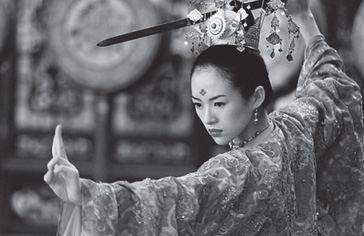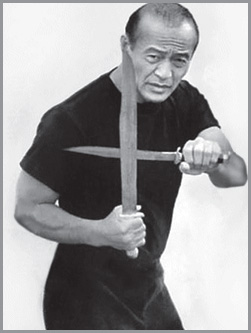
July 23, 2010
KUNG-FU FEVER!
Filipino Martial Arts
“It’s not whether you get knocked down it’s whether you get up.”
– Vince Lombardi –
SERVING IT COLD
Sports weren’t my thing when I was in grade school. My love of sport came later during high school. Being a skinny 93 pounds ‘back in the day’ didn’t sit well with the school bullies. I had to do something fast to stop them from using my body as a punching bag so I enrolled in a martial arts class (jujitsu).
They say ‘revenge is a dish that’s best served cold;’ it is. During the summer of 1963 in a dare to myself I enrolled at the then Hyde Park YMCA’s swim and martial arts program. Like the old Village People’s hit tune ‘YMCA’ implied,the ‘Y’ can be a great motivator. That magical summer turned my life around for the better. I returned to face my junior year with a fuller body, a rotten attitude, and a chip on my shoulder (grudge) the size of a Wisconsin lumberyard.
I was ready, willing, and more than able to kick some serious a** that year and I did.
HISTORY OF MARTIAL ARTS IN THE PHILIPPINES
Filipinos have been developing their version of the martial arts for centuries. Philippine martial arts stress functionality over ‘beauty.’ To level your opponent by any means necessary is the goal of Filipino kick-a** artists. It’s sort of like ‘ghetto fighting’ but with a certain Filipino flair for the bizarre added on. Sticks, knives, swords, spears, bows, killer yo-yo’s, ANYTHING to disable opponents or like my mother + GOD rest her soul + used to say, “If you can’t beat ‘em pick up something and…” Philippine no frills martial arts was first practiced by the archipelago’s indigenous peoples.

Since early Filipinos were influenced by the Chinese, Taiwanese, Malay Muslims, and other lo-cal aboriginals over time their hodge-podge of different styles fused into fighting styles unique to the rest of the fighting world.
Spanish chronicler Antonio Pigafetta’s 16th century account of the ‘disastrous’ encounter between all-time Filipino tough guy Chieftain Lapu Lapu (Move over Manny.) and Ferdinand Magellan. Pigafetta mentioned the efficiency in which Lapu Lapu and his warriors used to send those white boys packing.
Naturally they returned. With technology on their side spears, swords, bolos, and clubs were no match for bullets, bombs, cannons and guns. After the Spanish ‘did their little number,’ Filipino martial arts went underground. It became illegal for the fighting folks back home to carry weapons during the colonialist era. After the ‘changing of the guard’ (American and Japanese occupations) Filipinos were free to practice and develop their version of the martial arts melding it into the recognizable Filipino fighting styles of today (Escrima, Arnis, Kali, and others).
In Filipino martial arts some techniques are designed for unarmed fighters (Mano y Mano, Sikaran, Buno, and Dumog)
but the Philippines is a blade culture and Fili -pino fighting is designed to slice opponents up .
Reader, the RP is one of the last places on the planet you want to ever get into a knife fight. Case in point: a few years ago in on my travels back home one of our helpers, a short, thin, little speck of a woman worked as one of our ‘helpers.’ As I was taking a stroll around our backyard walking off a humongous meal, this little woman was in a squatting position cutting coconuts.

The machete she was using appeared bigger than she was. Size can be deceptive. The tiny woman flipped over nut after nut splitting them with a few well aimed hacks! Reader those were the big green suckers with the tiny brown nuts inside the shell. With a single ‘Womp’ she split the things open and removed the familiar brown nuts we see at Jewel or Dominick’s produce departments. When I walked towards her I made sure that she saw me. I didn’t want her to think I was sneaking up on her. I didn’t want her to mistake my head for one of the big green nuts she was effortlessly hacking open. I told her I was glad that we’re friends and would hate if we were enemies. She laughed and continued chopping.
Four years ago on another trip to the Islands I was approached by a man who wanted to sell me a box of weapons for the reasonable price of P1,000. After some bantering he let me wield them. To passersby I must have looked silly hacking away at the thin air with his weapons. The street salesman had a sword, a kriss, and I three other fancy blades I recognized from the ‘karate’ movies I’ve seen. When I finished playing ‘Bruce Lee’ I returned his valuable merchandise and thanked him profusely for letting me play with them. I told him that I wanted to purchase them but didn’t want any problems with airport security on the flight home.
Unlike another Asian country I visited (Thailand) Filipinos are mostly mild-mannered people and rarely look for trouble which suits me just fine though I wouldn’t take a long lonesome walk through a Mindanao rainforest dressed like a priest.
WHO SHOULD STUDY FILIPINO MARTIAL ARTS?
I never studied the Philippine version of weapons fighting. Aforementioned earlier I did study martial arts (karate and jujitsu) before I started packing on the pounds. I stopped after my sensei (teacher) insisted I study sumo. During my years as a ‘mat man’ I learned a lot about discipline though I succumbed later to donuts,hot dogs, ribs, and other fat edible items.
Martial arts training teaches students how to hone combat skills, the value of individual initiative and team work. During my teaching years I would routinely refer timid students to dojos (martial arts schools). I especially urge girls/ women to learn self defense. I can think of few ways than by studying the martial arts that teach people how to get along successfully in life. The writer has two kids studying Oriental fighting. I have a son studying shotokan karate and my granddaughter is taking tae kwon do. My wife was an avid practitioner of escrima when she lived back home.
Times up Reader; that’s all for this week’s Mega Scene’s Philippines Adventures. There are many styles of Philippine fighting. I only touched on a few. If you’re serious about learning more about Filipino martial arts go to your computer or public library if you don’t have Internet access. If you do search: Filipino martial arts and you’ll discover the many sites that discuss this unique brand of self-defense.
If you want to study Filipino martial arts contact the Wushu Training Center at 6525 W. Clark Street in Chicago at: guronate@sbc global.net or call: 847-239-3990 begin_of_the_skype_highlighting 847-239-3990 end_of_the_skype_highlighting begin_of_the_skype_highlighting 847-239-3990 end_of_the_skype_highlighting. The Filipino-Kali-Escrima Academy of Chicago is housed at Wushu.Need to brush up on Filipino language, culture, and customs be here next week and learn how. Till then have a safe weekend and GOD bless you.
vamaxwell@yahoo.com “ Te a c h e r s open the door, but you must enter by yourself.”
-Chinese Proverb-



 ShareThis
ShareThis